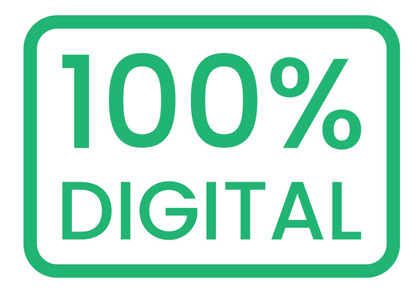Selecting the right digital marketing channel for your business isn’t a cakewalk anymore—it requires unwavering attention from every perspective. Moreover, every business needs perfect alignment of decisions with their targeted audience, market, and goals to ensure long-term growth. Nonetheless, in this guide, we’ll share some of the most effective methods, ranging from comparing different channels to building a winning, multichannel marketing strategy to help small businesses make an informed choice.
What Are Business‑Specific Marketing Strategies?
A business-specific marketing strategy usually focuses on your needs, including industry, size, budget, audience behaviour, and other growth objectives. For instance:
- A B2C e-commerce store may be famous on Instagram and Facebook.
- A niche B2B SaaS startup might perform more efficiently with LinkedIn and customer-centric email campaigns.
Choosing Marketing Channels for Business: The Core Criteria
Before understanding different channels, you must take a mini-break and analyse:
- Audience location & demographics—Where do they spend most of their time online
- Business model (B2B vs. B2C)—Some channels align with one model better but may not offer the same benefits to the other.
- Budget and resources—Channels vary greatly in terms of cost, complexity, and content needs as well as formats—video or blog.
- Measurement & goals—Always choose channels based on what you can easily track and optimise over time.
Digital Marketing Strategy for Small Business: Channel Comparison
Here’s a complete breakdown of some of the most popular digital marketing channels comparison with their pros and cons to help you analyse what suits your business over time.
SEO (Search Engine Optimization)
SEO helps your website rank higher on various search engines such as Google. It’s perfect for someone who desires long-term growth.
Pros:
- Drives free, organic traffic over a period of time
- Builds trust and credibility among the audience
- Ideal option for B2B lead generation and local businesses
Cons:
- It takes a long time to show the desired results
- Needs consistent content creation and expert optimisation over time
PPC (Pay-Per-Click Advertising)
PPC, including Google Ads, enables you to appear at the top of the search results immediately by paying for every single click.
Pros:
- Instant visibility and traffic
- Effective budget control and measurable results
- Works well for most of the product launches and promotions
Cons:
- May get expensive, especially in case of competitive niches
- Requires careful tracking and optimisation to avoid potential wasting of budget
- Social Media Marketing (Facebook & Instagram)
These platforms are considered the perfect choice for engaging with your targeted audience, especially for B2C businesses and high-end lifestyle brands.
Pros:
- High engagement and sharing potential in a short time
- Strong visual storytelling
- Ideal for building a brand’s community
Cons:
- The short lifespan of the content and changing algorithms
- Requires regular posting and unique yet creative content to stay relevant
It is often considered one of the most powerful tools for nurturing relationships with your existing customers and potential leads.
Pros:
- High return on investment (ROI)
- Customised communication and automation options
- Perfect for retention and upselling purposes
Cons:
- Requires a good-quality email list
- Deliverability issues and low open rates if not done in a strategic way
Choosing B2B vs B2C Marketing Channels
B2B channels are all about precise decision-makers and high ROIs.
- LinkedIn for content & lead generation.
- Email for maximum nurturing & direct follow-ups.
- SEO for educating and engaging those buyers searching for effective solutions.
B2C channels mostly require an emotional and broader appeal.
- Facebook and Instagram for your brand story and ads.
- TikTok or YouTube for higher visual engagement.
- Email and SMS for offers, loyalty programs, discounts, and retargeting purposes.
Building a Multichannel Marketing Strategy
A multichannel marketing strategy seamlessly incorporates channels to ensure consistent messaging, wider reach, and stronger pain points.
Define your funnel precisely: Brand awareness → Practical consideration → Purchase → Retention.
Here’s how you can map your channels to funnel stages:
- Use social media ads or programmatic at the awareness stage.
- Utilise PPC and SEO during consideration.
- Leverage email and retargeting to secure high conversions and encourage loyalty.
- Coordinate all your creative assets and timing—keep your visuals, tone, and CTAs as consistent as possible.
- Track cross-channel performance to see what factors are driving the overall conversions.
- Repeat regularly—shift your budget to higher-performing channels, and pause underperformers in the meantime.
Conclusion
Choosing a marketing channel for businesses isn’t just a random guess—at least not in this digital era. By combining a clear understanding of B2B vs. B2C marketing channel differences, testing your channels through pilot campaigns, and using a balanced multichannel marketing strategy, you can effectively maximise your overall ROI and growth in the long run.
Want to take your small business to new heights with effective digital marketing strategies? Then, contact 100% Digital today to book a free review and discuss the best channels that actually work for your business.
